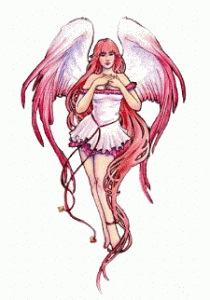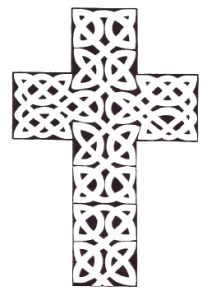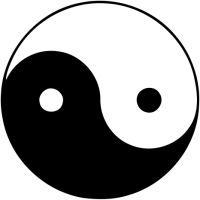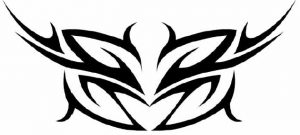A Detailed Look at Kanji Symbols
While some tattooists embrace the opportunity to complete kanji symbols, others completely reject the idea. Kanji is not something that you can simply master without a substantial amount of dedication and practice. Those who are very good at it are very talented and highly respected artists.
 Kanji symbols are part of a very complex system that is based on pictographs rather than alphabetical letters. Every symbol requires up to 30 individuals strokes from the pen. Many symbols are complex, offering up to 10 different interpretations which means that it takes great skill to have the linguistic knowledge that is needed to accurately analyze what the kanji symbols mean. Therefore, if Japanese is not your native tongue, you cannot be guaranteed of the exact meaning of your tattoo unless you fully trust your tattooist.
Kanji symbols are part of a very complex system that is based on pictographs rather than alphabetical letters. Every symbol requires up to 30 individuals strokes from the pen. Many symbols are complex, offering up to 10 different interpretations which means that it takes great skill to have the linguistic knowledge that is needed to accurately analyze what the kanji symbols mean. Therefore, if Japanese is not your native tongue, you cannot be guaranteed of the exact meaning of your tattoo unless you fully trust your tattooist.
Despite the risk that comes with wearing a permanent display of the unknown, kanji symbols account for a large portion of tattoos received everyday. Why? Simply because they have unique, mysterious, bold and beautiful qualities all rolled into one symbol.
Types of Kanji Symbols
There are a few types of kanji symbols that are seen more in tattoos than they are in everyday use. Kaisho is one that you are probably familiar with, characterized by the bold angular black script. Kanji is also commonly written in gyosho, which is semi-cursive or sosho, which is full cursive. The style chosen is usually based on how the client accepts the flow of the symbol. Some people prefer a soft and loose look while others like the look of a tight, neat symbol.
Choosing a text style for kanji symbols should always be a choice of personal reflection and never forced by the artist. After all, tattoos are about self-interpretation. Some masters of the dialect even suggest that you don’t necessarily need to know the meaning of a symbol, some people are drawn to one for whatever reason and the meaning usually ends up fitting them well.
The Difficulty of Kanji Symbols
When writing kanji symbols, every one of them demands an exact order of brush strokes. This can never be altered. For a tattoo artist to draw these symbols and complete them precisely the way that they are meant to look is extremely difficult. It is also rare to find someone with such talent to do so.
It is advised when you decide to get kanji tattoos to take the time to research your tattooist. Look at their portfolio and experience in the related field. If you want to feel completely confident in the meaning of your symbol, there are trusted and respected stencil that you can purchase online to take to your tattooist to use.

 Throughout history, fairies have been called many names such as fair people or little people. Of course, this was thoughtfully done because there was always a chance of invoking their presence if you spoke their name. Interestingly, the Gaelic term for them is sidhe, which is a name that also includes the many leprechauns and banshees of Ireland.
Throughout history, fairies have been called many names such as fair people or little people. Of course, this was thoughtfully done because there was always a chance of invoking their presence if you spoke their name. Interestingly, the Gaelic term for them is sidhe, which is a name that also includes the many leprechauns and banshees of Ireland. Christian priests invaded the country to convert the Celts after the Romans conquered Ireland. At this time, the Celts had no written language however, they were equipped with a visual style that was quite unique. It incorporated an attempt to suggest no beginning or end with their love for nature with complex and interlacing designs.
Christian priests invaded the country to convert the Celts after the Romans conquered Ireland. At this time, the Celts had no written language however, they were equipped with a visual style that was quite unique. It incorporated an attempt to suggest no beginning or end with their love for nature with complex and interlacing designs. The concept behind yin yang tattoos has quite a long history. There are recorded writings of the philosophy behind the symbol as far back as 1,400 BC however, it was not until 770 BC that the popularity began to emerge.
The concept behind yin yang tattoos has quite a long history. There are recorded writings of the philosophy behind the symbol as far back as 1,400 BC however, it was not until 770 BC that the popularity began to emerge. It has been common for a long time for the Maori to display their social status by wearing tattoos on their body. Some have even been know to ink their whole entire face. Once the European visitors observed this rare showmanship of status, they also wanted to be a part of the meaningful tradition.
It has been common for a long time for the Maori to display their social status by wearing tattoos on their body. Some have even been know to ink their whole entire face. Once the European visitors observed this rare showmanship of status, they also wanted to be a part of the meaningful tradition.